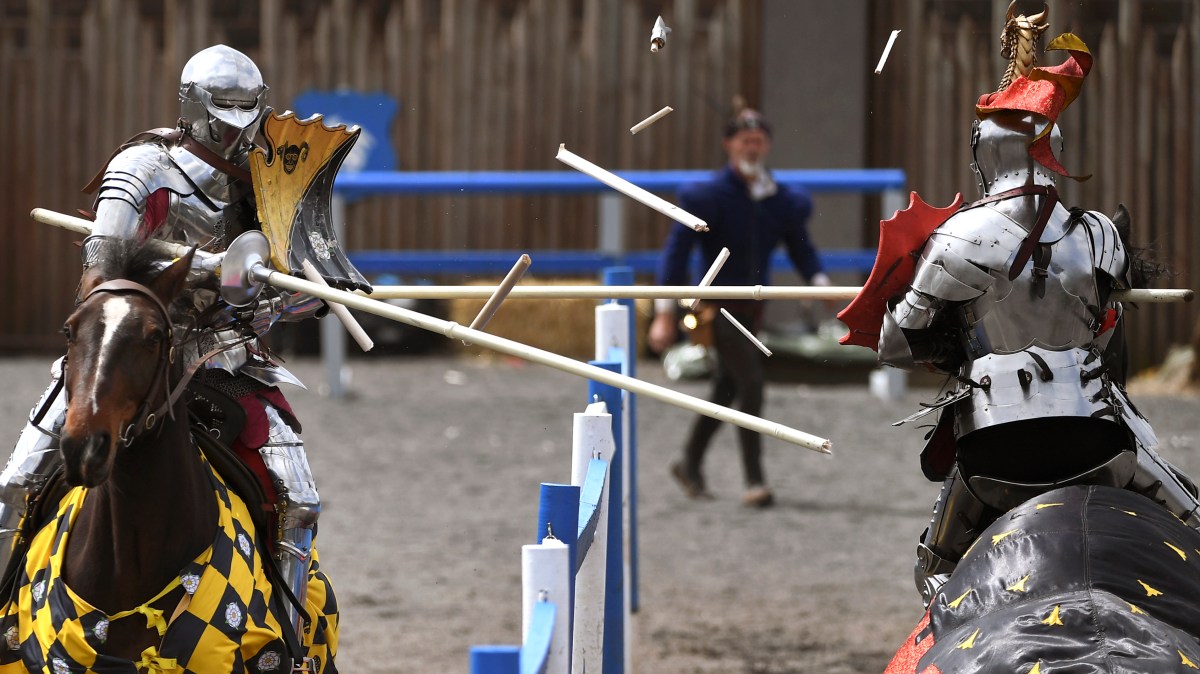Lunging at an opponent, lances titled, armour glinting in the sun, jousting isn’t just a test of mettle. For some young Australian women, it’s also a chance to meet a suitor.
“It’s the coolest sport out there, and it’s only becoming more popular,” says the 24-year-old jouster Mieka Leitch.
Inspired by her father, she started jousting at 16 and is now watching the medieval sport draw in young people across Australia. Leitch’s theory is that “ladies want to find the knight in shining armour” — by becoming one themselves.
Leitch, who is taking some time away from the arena after a jousting injury, judged the Australian Jousting Championships last weekend at Kryal Castle, near Ballarat, Victoria. She lives in the faux-medieval castle — complete with moat, drawbridge and stone turrets — with her father, Australia’s national champion jouster Phillip Leitch, 50.
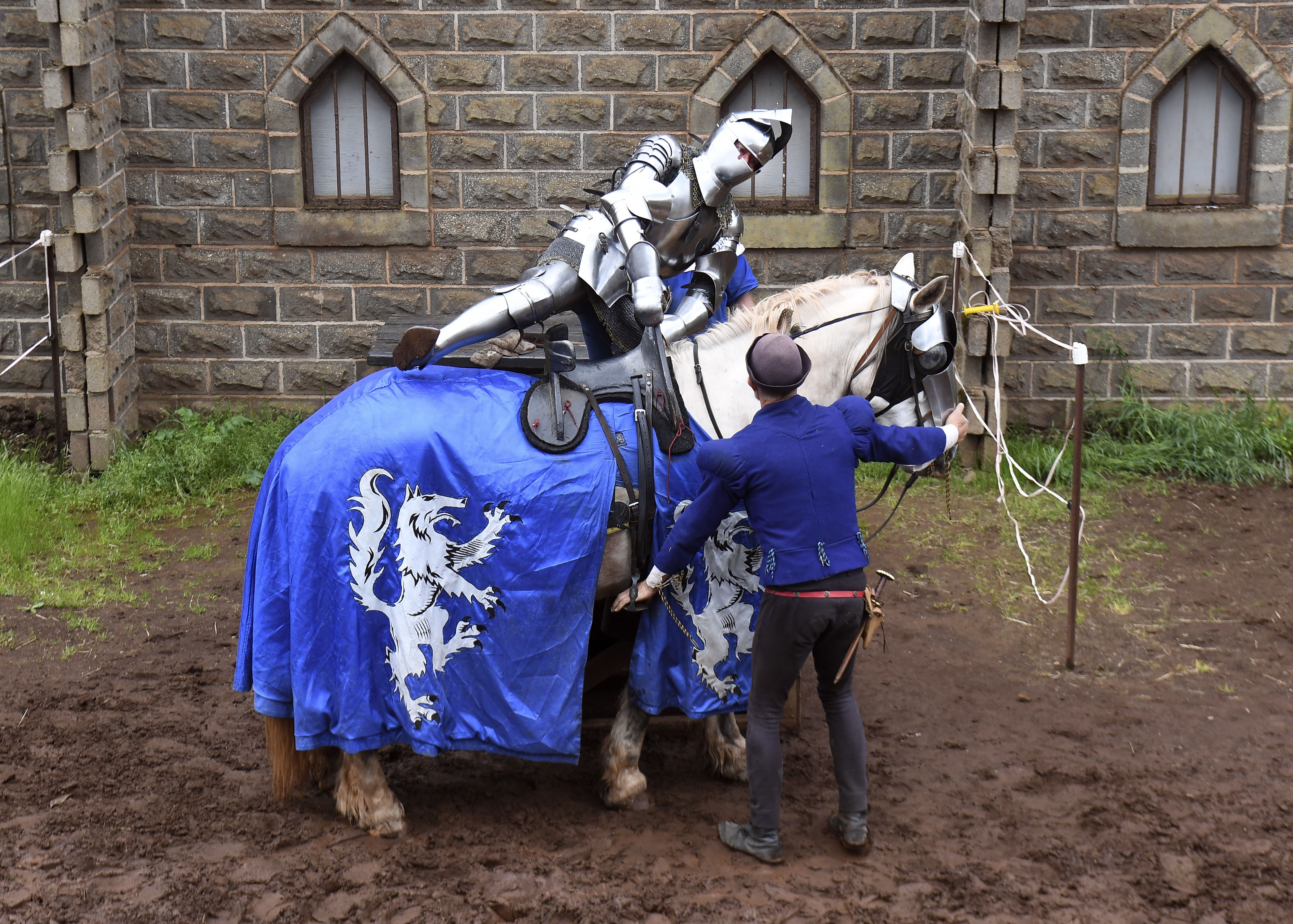
Jousting is seen as escapism and, for some, a return to chivalry
WILLIAM WEST/AFP/GETTY IMAGES
Once seen as a nerdy pursuit, jousting is seeing a surge of popularity among young Aussies, wanting to try out an extreme sport and meet new people.
One of the biggest events, attracting more than 4,000 spectators, is the Smashes, a biannual tournament between English and Australian knights that is jousting’s equivalent to the Ashes. In March, Australia triumphed over England, winning a gold-plated trophy filled with the ashes of a lance burned at Arundel Castle, West Sussex, the home of jousting.
Across Australia, jousters can get their fix with historical fairs held in nearly every state. Many compete on a circuit that includes the South Australia Medieval Fair, Abbey Medieval Festival in Queensland and the Queanbeyan Medieval Fair in New South Wales.
Last weekend, on Kryal’s battlefield, 12 competitors and more than 1,000 spectators gathered for two days of modern jousting. Modern because this year’s championship was a 50-50 gender split, with more women taking up a lance than ever before. In the end, it was Phillip Leitch who clinched the national champion’s title for the third time.
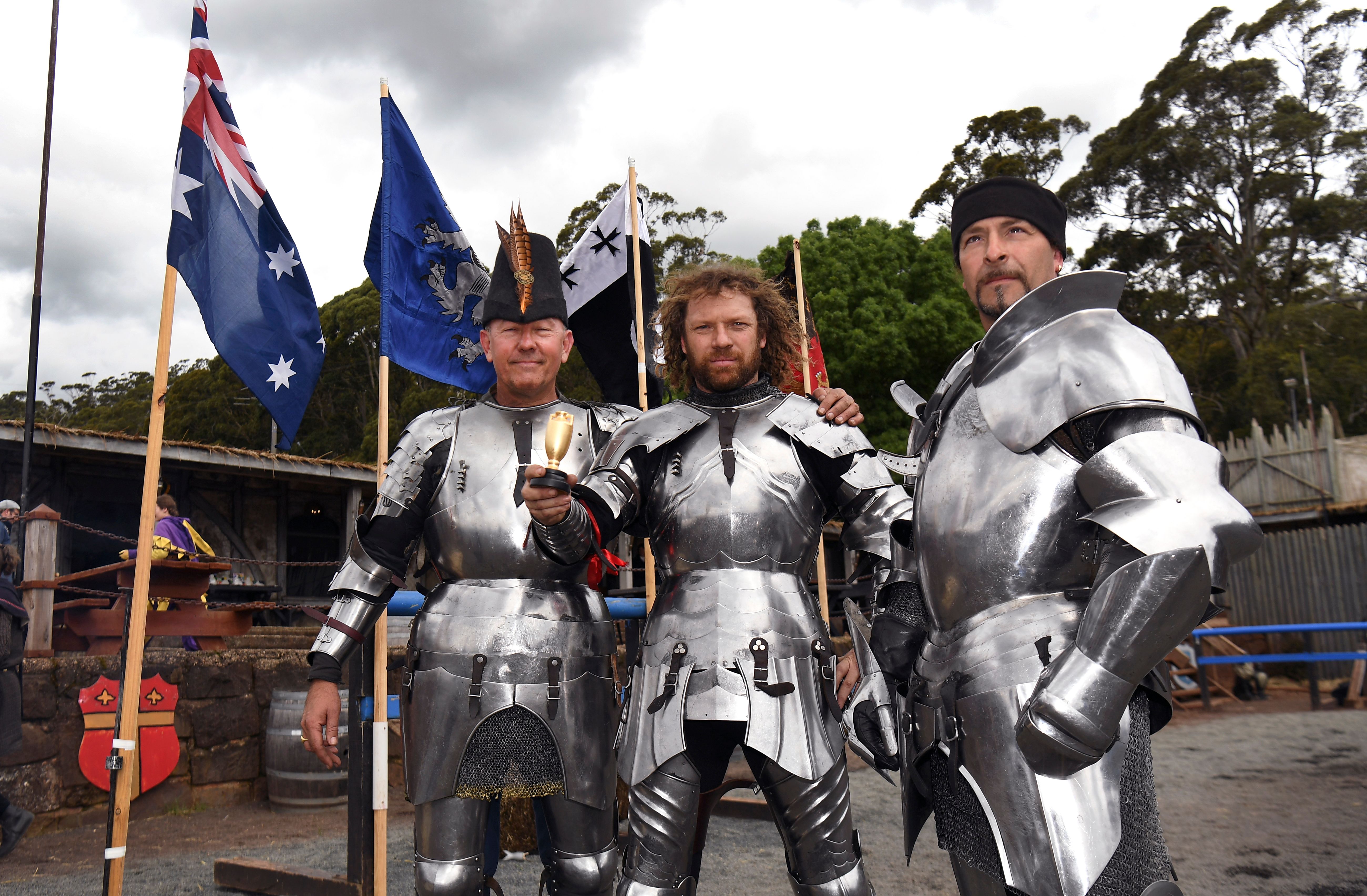
Phillip Leitch, centre, celebrates with his team-mates Andrew McKinnon and Clifford Marisma, right
WILLIAM WEST/AFP/GETTY IMAGES
Mirroring the 13th-century sport, armoured riders charge each other on horseback, aiming to score points by hitting or unseating their opponent. In medieval times, it wasn’t uncommon to receive a fatal blow — one tournament, in 1241, resulted in the deaths of 80 knights and squires. Now the sport has more safety precautions including toughened shields and rubber or softened wooden tips for lances, though competitors still risk broken bones, bruises and concussion.
As for its rising popularity among young Australians, Leitch says there’s a return to older values at a time when most people meet on apps. “Chivalry isn’t dead, it’s just coming back,” he says.
So what’s behind the surge? Professor Louise D’Arcens, a Middle Ages specialist at Macquarie University in Sydney, suggests jousting offers young people a form of escapism. “It’s violence that has a code, it has manners and rituals attached to it. There’s something very appealing when the world feels very chaotic,” she says.
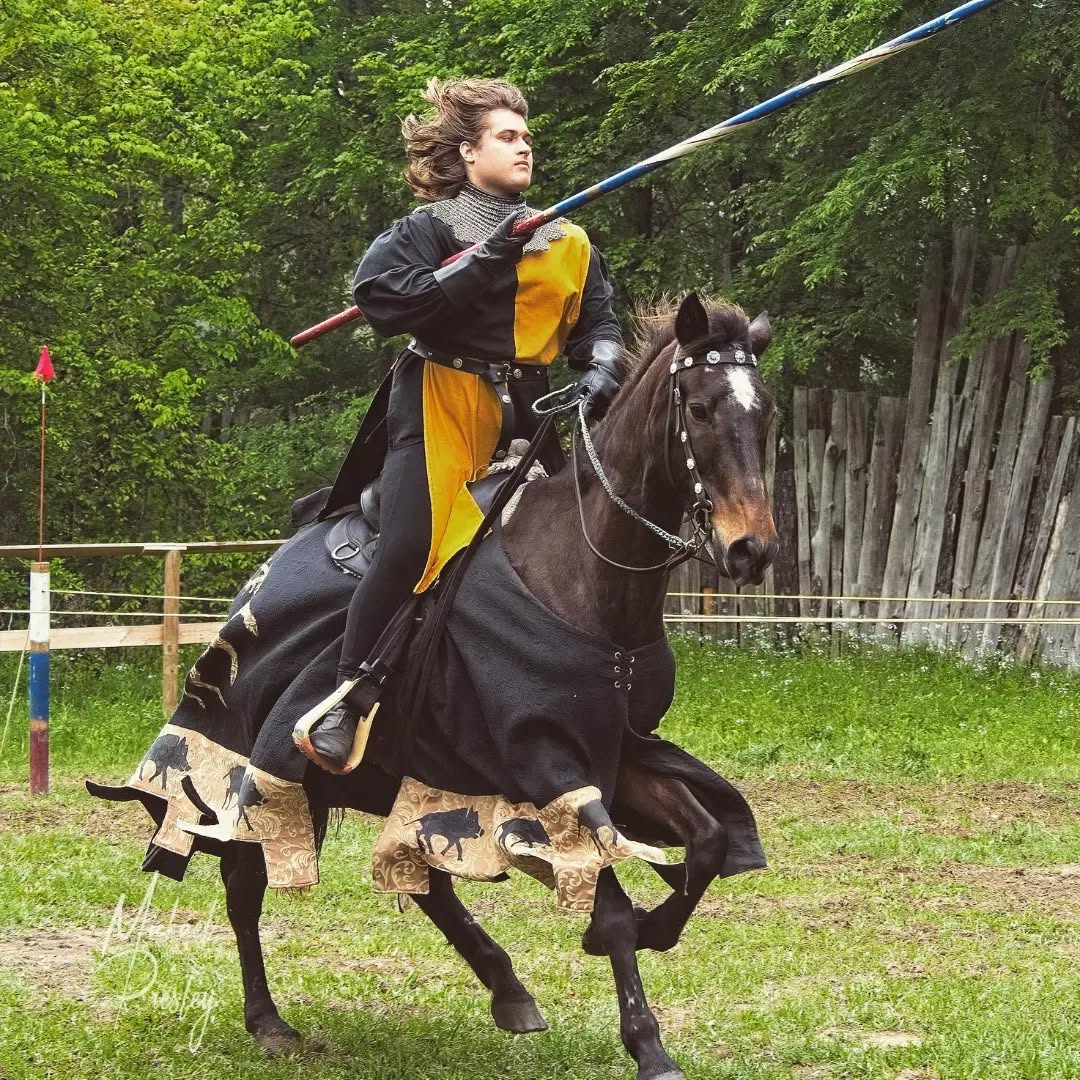
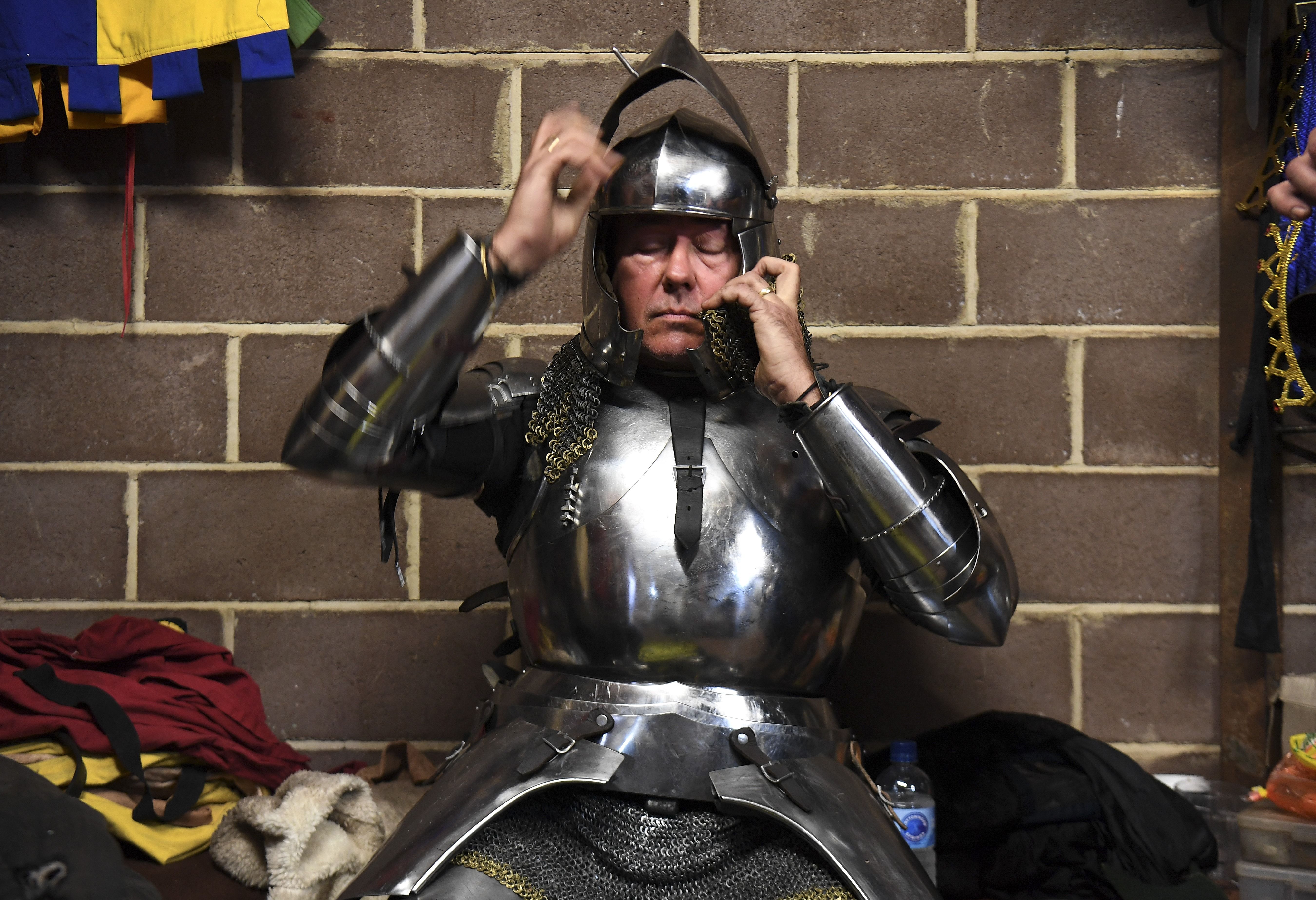
WILLIAM WEST/AFP/GETTY IMAGES
Some 10,000 miles from the birthplace of jousting, the sport taps into Australia’s “bush mythology”, says D’Arcens. “The man on horseback battling for survival in the elements has always had a glamour attached to him.”
The sport has all the markings of eligibility — a jouster must be physically fit, as some medieval garb weighs up to 40kg. “Most of us go to the gym. You need that upper body strength to ride a horse with all that armour,” she says. It’s not a cheap pursuit; a custom suit of armour can set a jouster back A$30,000 (£15,000).
D’Arcens says: “One of the reasons it’s a bit niche is there’s a dollar value attached to being able to be a jouster that most people probably can’t cough up.” Viking festivals, she says, are more popular. “I went to one recently and the guy said to me, ‘Look around you. We’re all fat and we’re all poor. None of us can afford armour.’”
Social media is helping Australian jousters reach a wider audience, with TikTok and Instagram influencers like Mieka Leitch’s idol, Lady Renae Marisma (@red.crescent.moons) inspiring a new generation. She posts shots of herself clad in 15th-century armour, charging into battle on her trusty quarter horse mare, Goldie.
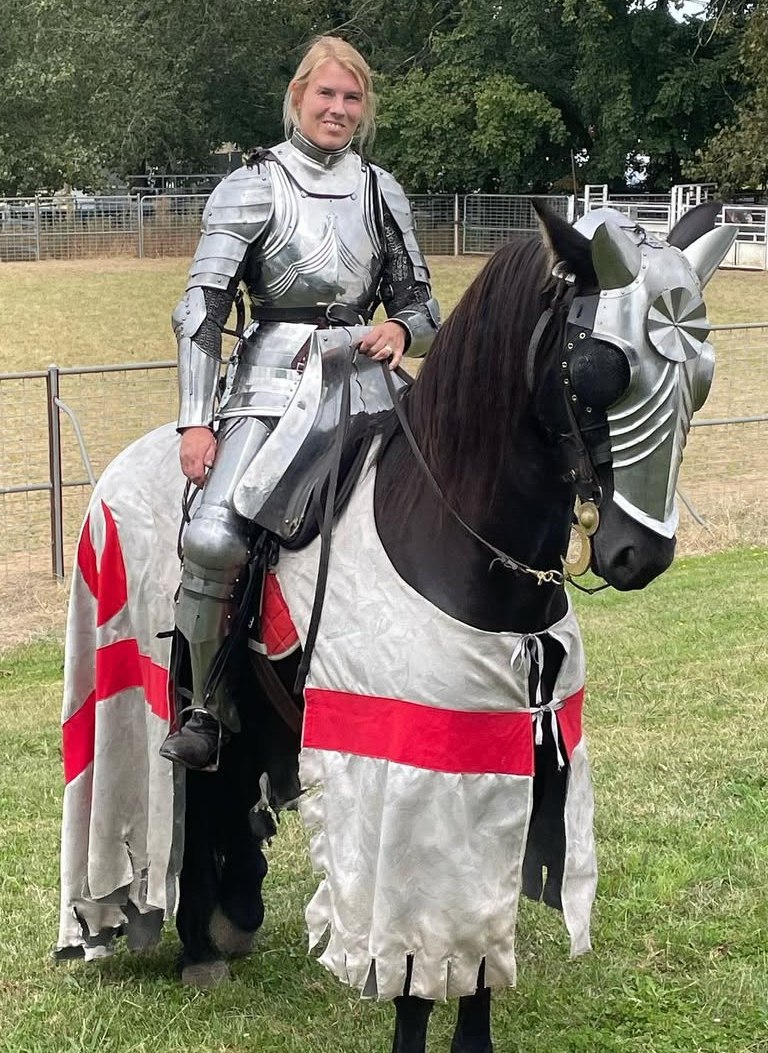
For others, it’s a chance to flex their skills. One male jouster (@just_a_jouster) uploads reels of himself practising on his steed, declaring: “It’s knight boy summer.”
Internet culture is partly responsible for jousting’s revival. “Being a nerd is cool again. That feeling that you’re stepping back in time, you’re in a whole different world,” says Leitch, who recently started dating an American jouster whom she met on the field.
Kryal Castle hosts daily jousting battles for visitors as well as major tournaments. There’s also public swordfighting, battle tactics, lessons on chivalric code, as well as archery and axe throwing.
“There’s something for everybody from families to singles who want to come to drink and feast and watch people fight,” says Leitch.

